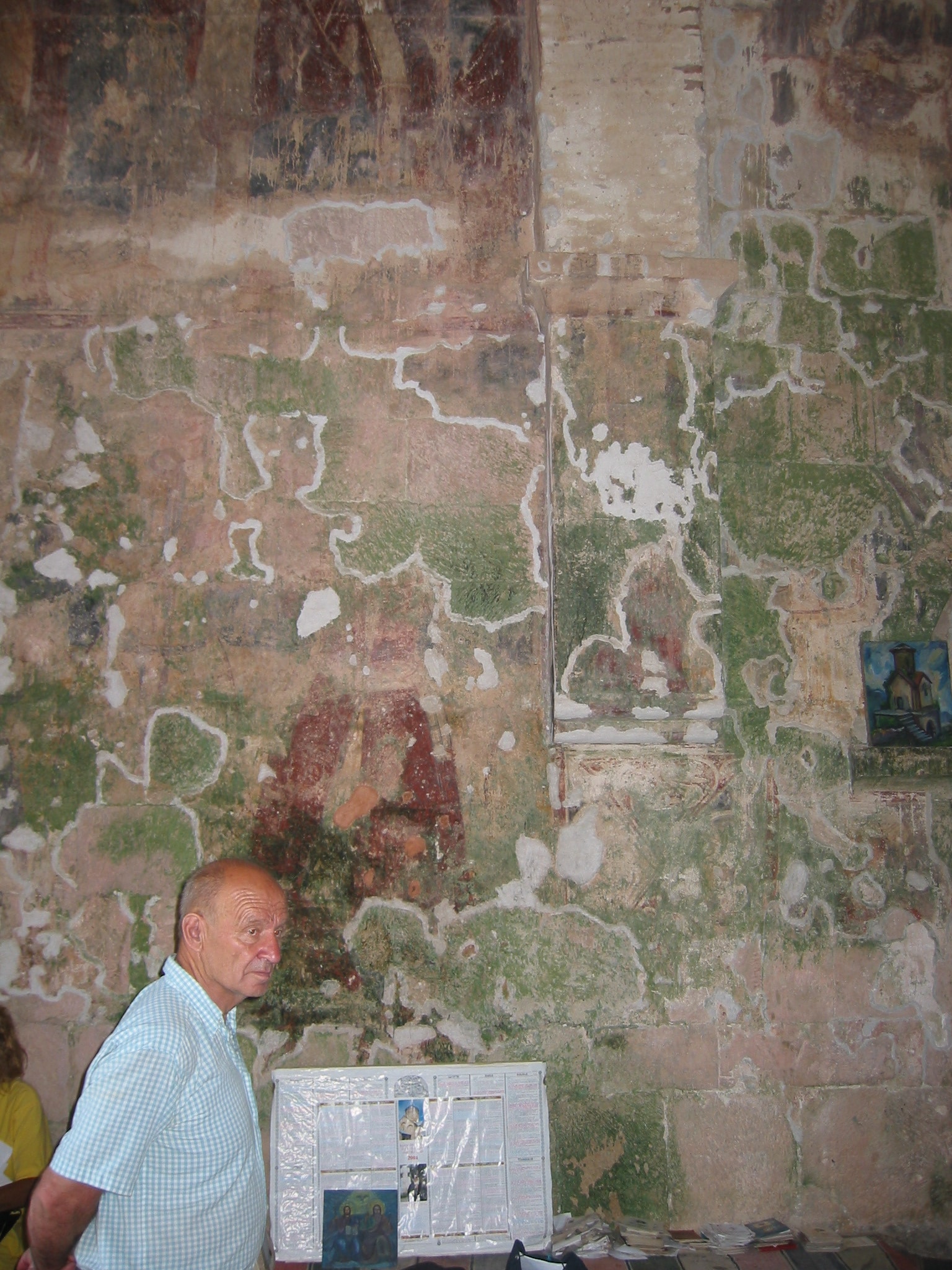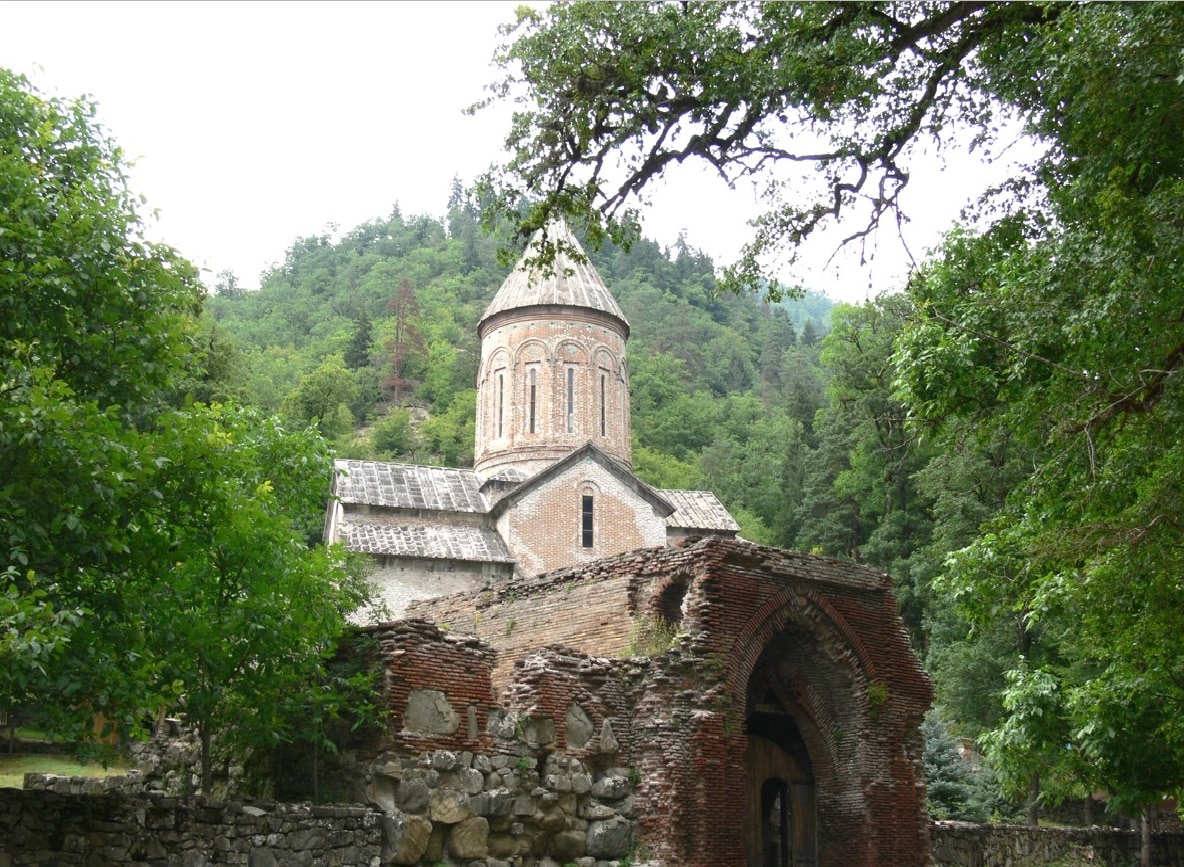Project planning and consultancy work in the Republic of Georgia
The call from the World bank in the mid 1990s to take on a conservation project in the Republic of Georgia came out of nowhere, taking us completely by surprise. The newly born nation – recently split with the Soviet Union – under President Ėduard Amvrosievič Ševardnadze was establishing links with the west for aid and consultancy work, and an international support team had decided that it was important to support projects involving exchanges in professional expertise and training in the cultural sphere. In record time an agreement was set up with an local NGO – ქართული ხელოვნებისა და კულტურის ცენტრი (Georgian Arts and Culture Center- the GACC) and with its board – entirely made up of highly determined women – we put together a complex project involving
a plan for the treatment of the church and mural paintings of St Nicholas at Kintsvisi and training workshops for the GACC’s conservators, both students from the Fine Arts Academy and practising conservators from the Ministry of Culture. The site at St Nicholas is one of the most important monastic churches in Georgia, both for its architecture and its wall paintings dating to a high point of Georgian art in the 12th and 13th centuries and which include portraits of famed Georgian monarchs Lasha Giorgi, Queen Tamara and George III on the left wall (https://en.wikipedia.org/wiki/Tamar_of_Georgia). The interior of the church, much damaged by water infiltration from the roof and downpipes, is still a splendour of lapis lazuli, used in profusion for the backgrounds and robes.
The CBC mission, entrusted to Sabina Vedovello and Mark Gittins, transported us to a totally different world, encountering materials and techniques which we see rarely in Italy. It was also testing having to deal with cultural differences
and approaches not always similar to ours and come to terms with the practical limitations involved in working in a society which, at the time, had been severely impoverished, with minimal material resources available.
One of the most interesting problems involved microorganisms: most of the sites we visited had widespread areas of pink biofilm, much more extensive than the more usual green patinas found in the areas exposed to direct sunlight. After preliminary work on characterisation of the organisms by Vito Meggiolaro of R&C Scientifica, a project was set up between Georgian conservation organisations and the Università di Roma Tre which led to the detailed identification of the bacterial species involved and establishing a treatment protocol.
To deal with problems involving degradation of the paintings due to humidity, we involved Studio Massari, internationally acclaimed experts in the field, and continued to work with them on two further projects in Georgia, the Church of the Virgin, Timotesubani (2003) and the monastery at Martvili (2008). In these two missions more space was created for training, the Culture Ministry organising training worksites for students taking a degree in conservation, and our participation was requested for when the students were on-site.



Training centred on the operations aimed at stabilising the paintings: re-adhesion of the paint layer and plasters, and filling losses; operation which had priority given the fragility of the works and the limited resources available. It was decided not to enter into the complex issues of cleaning and in particular the intricacies of re-touching, factors in which cultural perceptions weigh as much as technical considerations. In any case, limited interventions met with agreement with the prevailing viewpoint amongst the conservation community in Georgia of minimal intervention, including limited or no retouching.
These adventures were recognised by a European Union Prize for Cultural Heritage (Europa Nostra Medal), conferred on us and our colleagues in the GACC in a ceremony in 2006 in Stockholm, in the same hall as where Nobel prizes are awarded. The conclusion of these various projects, now completely in the hands of various Georgian institutions, was celebrated during an itinerant international conference located successively in Tblisi, Batumi and Signani, in which we and our partners told of the roads taken and the results obtained.











